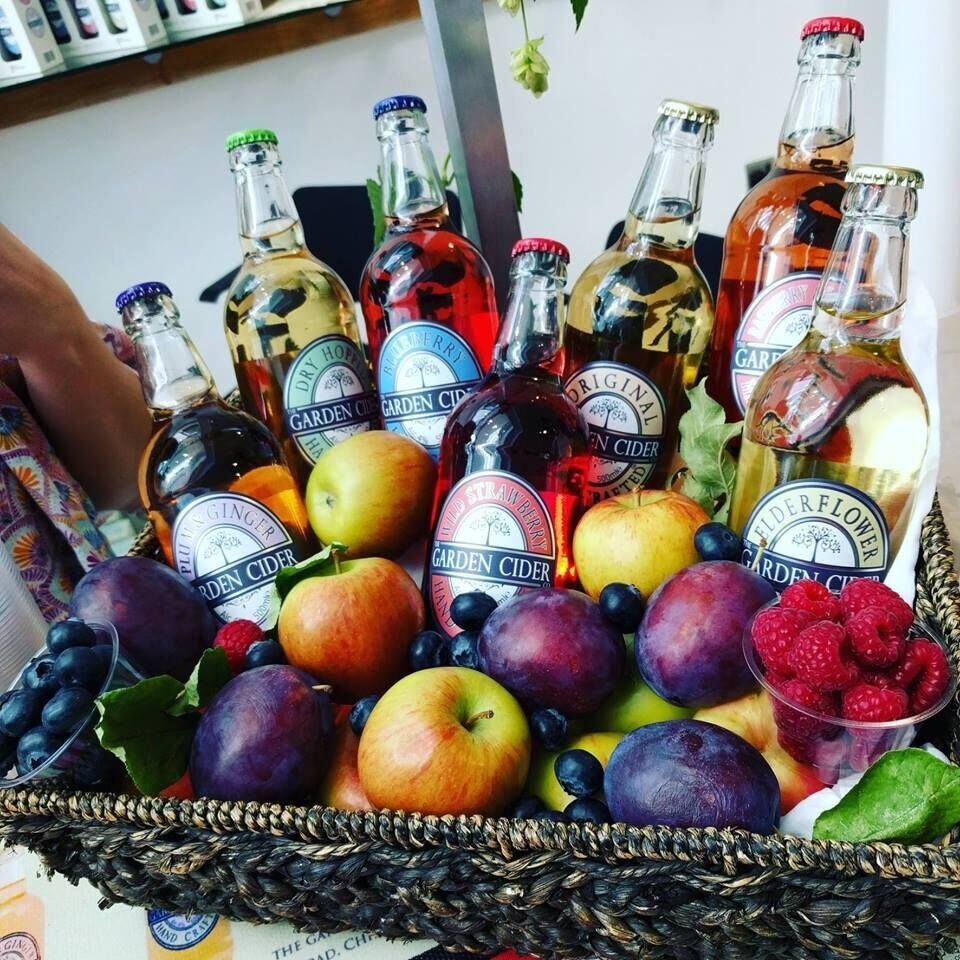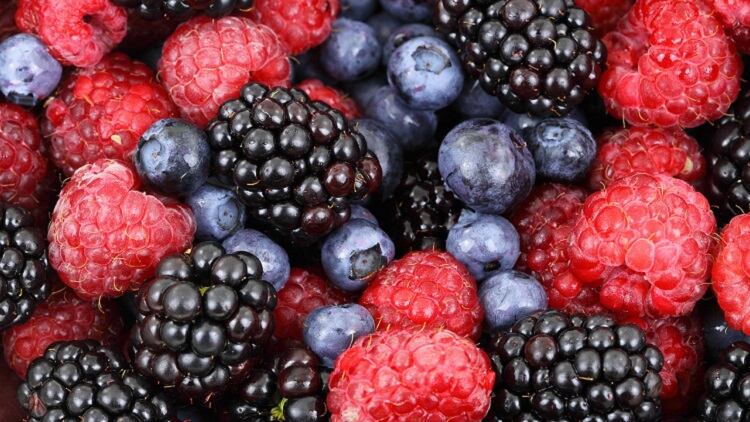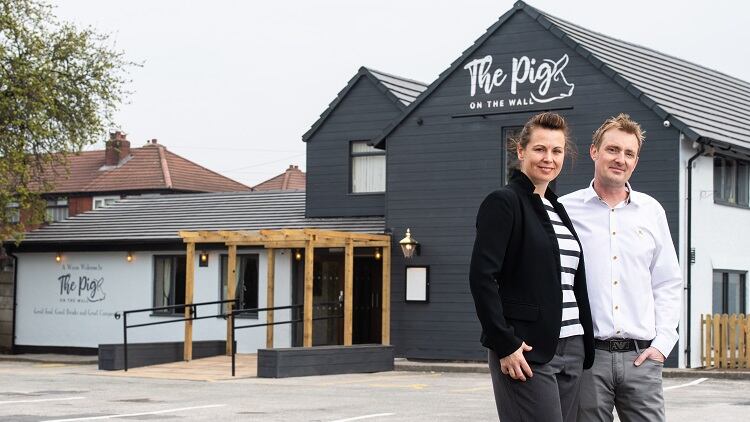Fruit cider sold in pubs makes up two fifths (40%) of all cider volume sales in the on-trade and is now worth £826.9m, according to data from CGA.
While the popularity of mixed berry products shows no signs of abating, new flavours are also beginning to make their mark. However, the classic mixed berry flavours are not going anywhere, which is something that will come as no shock to operators. And staples in this sector will continue to thrive – with producer Heineken bidding to make Strongbow Dark Fruit reach £2bn worth of on-trade sales by 2024.
The product was the second best-selling cider in pubs last year, and saw a significant volume sales growth of 34.9% too. Its popularity has been driven in part by what Jerry Shedden, category and trade marketing directorat Heineken UK calls “an unrivalled, loyal consumer fan base”.
Shedden says: “Celebrating its fifth birthday this year, the [Dark Fruit] brand caters perfectly to the increasing consumer demand for fruity flavours and a sweeter taste.”
Continuation of innovation

However, this popularity does not mean there will be no innovation elsewhere in the category. In fact, it has proved the opposite. Keeping up the momentum for berry Flavours will be key for pubs, according to Melanie Timmins, head of sales at Sheppy’s Cider.
“Producers are looking towards further innovation to sustain this growth with premium berry and floral variants, otherwise unseen in the category, being explored in order to reinvigorate consumers’ appetite for flavoured ciders,” she explains.
Surrey-based The Garden Cider Company has introduced a premium craft cherry flavoured cider, which it claims taps into consumers’ thirst for the drink as well as their interest in natural flavours and lower levels of sugar.
Co-founder Ben Filby explains: “We have received a lot of requests from customers who want to see another berry flavour added to our range, and given the popularity of mixed berry ciders, it seemed a no-brainer to create our own.
“We rely, as much as possible, on the natural sugar in the juices to minimise the amount of sugar added. We also use sterile filtering rather than pasteurisation, which allows us to enhance the natural flavours of our cider,” he adds.
Yet, wellness concerns – with consumers shunning highly sugary drinks and opting for low or no-alcohol options – are ever present, say publicans and drinks suppliers.
Licensee Andy Mounsey, who operates the Star, Godalming, Surrey, says the drinks market is becoming more aware of dietary needs.
“With cider, as well as other drinks, the focus is shifting to quality rather than quantity and offering as much choice as possible, such as gluten-free, low alcohol, etc.” he says.
Kopparberg brand manager Rosie Fryer agrees, explaining: “As consumers become more health-conscious and responsible, brewers and cider makers need to ensure they have a diversified portfolio with calorie reduced and low and no-alcohol options to embrace the shift in behaviours.”
Low and no-alcohol options
The introduction of several low and zero alcohol cider products in the past year – most recently Old Mout’s alcohol-free Berries & Cherries cider – comes as research from the BMC Public Health medical journal reveals that almost a third of younger consumers are avoiding alcohol.
Fryer adds: “To ensure operators are maximising the sales potential of their range and increase footfall the following must not be ignored: ensure you stock alcohol and non-alcohol products to cater for differing consumer needs and drinking occasions.”
Providing a variety of premium and mainstream drinks is also key, according to Heineken’s Shedden. Making sure the brands stocked match the venue is something operators must do “to fully capitalise on the growing consumer demand for fruity flavours,” he says.
Publican Liz Aspden has another prediction. Aspden, who operates the Harlequin in Sheffield, South Yorkshire, which was shortlisted for the Best Cider Pub for the Great British Pub Awards 2016, says: “In terms of future products in this category, I wonder whether we’ll see producers concentrating on colour rather than special flavours.
“Such as drinks that sound like they’ll be pink in appearance, regardless of whichever fruit/syrup is in there – a lot of drinkers drink by brand name.
“For example, we get asked a lot for Strongbow Dark Fruit [which we don’t sell] so again I wonder whether smaller producers will be looking to imitate the appearance and flavours of big brand names.”
Exotic flavours look set to be the next big thing. The Star’s Mounsey says: “In the past few years, we have seen lots of new flavours being introduced to cider to encourage a younger trendier clientele.
“In the hotter coming months, we are expecting lots of pineapple coconut and mango flavours... exotic and maybe spicy,” he adds.
Cocktail-themed ciders, incorporating the likes of Bourbon or gin and tonic flavours, could become more prevalent in the market too, the operator said.
Category manager Shedden agrees that younger drinkers are keen to try summery flavours like pineapple.
“The real excitement in growth is coming from more exotic choices as consumers are increasingly looking for interesting flavours.
“The rise in exotic flavours has been driven largely by a younger generation who are looking for sessionable fruit ciders in original that have unique flavours.
An Old Mout Pineapple & Raspberry variant launched last month with this in mind. Exotic flavours are growing at a faster pace than their berry counterparts with 20% annual value growth within the premium flavoured cider category, according to CGA data.
Have the knowledge
Ultimately, training your staff to have confidence to explain new products to customers is key, says Mounsey.
“Suppliers can keep you abreast of new products and flavours,” he says. “From there it’s all about making sure staff have the knowledge they need to pass on to customers. Staff are encouraged to give out tasters to customers, while talking about the product.”




